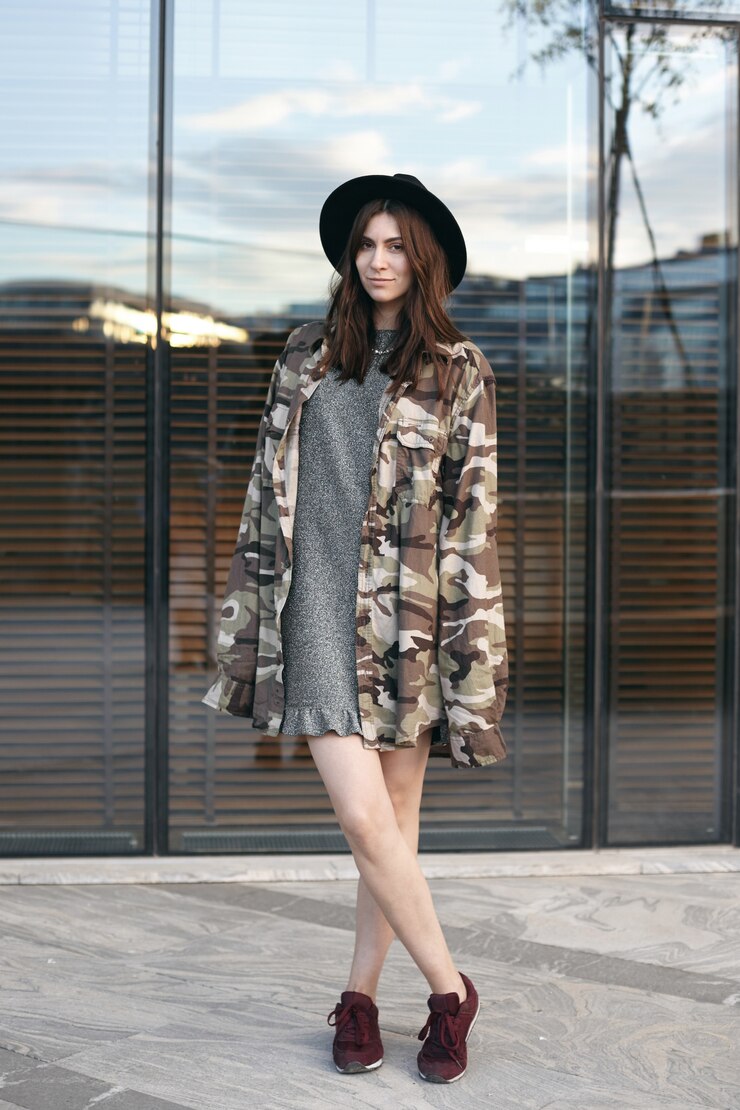Introduction to Haute Couture
The height of fashion is known as haute couture, when exquisite workmanship melds with creativity to produce apparel that is more than simply functional art. The word “haute couture,” which translates to “high sewing” in French, describes exquisitely tailored apparel manufactured from the best materials and often created by hand with meticulous attention to detail. These one-of-a-kind items redefined fashion, setting standards and highlighting designers’ inventiveness.
In the fashion business, haute couture is very important since it is the creative engine that propels innovation and serves as an inspiration to designers all over the globe. In addition to being luxurious, the items on the haute couture catwalks push the envelope and redefine what is possible in terms of design and originality.
Historical Overview of Haute Couture
Origins and Early Development
The origins of fashion may be found in Paris in the middle of the 19th century, when it first appeared in response to the need for upscale, custom-made clothing. The first fashion firm was founded by Charles Frederick Worth, who is sometimes referred to as the founder of the fashion industry. This was the catalyst for the emergence of an international phenomenon.
Key Milestones in Haute Couture History
From the founding of the Chambre Syndicale de la Haute Couture in 1868 to the enduring designs of Christian Dior and Coco Chanel, the history of haute couture is replete with momentous events. These turning points have influenced not just the development of haute couture but also its place in the larger world of fashion.
Iconic Haute Couture Designers
Early Pioneers
Designers who were influential in the development of fashion were Worth, Chanel, and Dior. Dior’s ground-breaking New Look, Chanel’s classic elegance, and Worth’s structured designs all helped to establish haute couture as a prominent and significant force in the fashion industry.
Modern Influencers in Haute Couture
Today, designers like Karl Lagerfeld, Valentino Garavani, and John Galliano continue to push the boundaries of fashion. Their innovative designs and unique perspectives keep fashion relevant in an ever-changing fashion world.
The Process of Creating Haute Couture
Design and Inspiration
The creation of a haute couture piece begins with inspiration, often drawn from art, culture, or personal experiences. Designers sketch their visions, transforming ideas into tangible designs that reflect their unique style and creativity.
Craftsmanship and Techniques
Craftsmanship is at the heart of clothes fashion. Each garment is meticulously crafted by skilled artisans, using techniques such as hand embroidery, beading, and intricate sewing. The process is labor-intensive, often taking hundreds of hours to complete a single piece.
Haute Couture Fashion Shows
Major Events and Locations
This fashion shows are grand spectacles held in fashion capitals like Paris, Milan, and New York. Events such as Paris fashion Week showcase the latest collections, setting the stage for future trends and solidifying the status of fashion as the epitome of luxury fashion.
Impact of Fashion Shows on Trends
These fashion shows influence not only fashion industry market but also the broader fashion industry. Trends seen on the runway often trickle down to ready-to-wear collections, shaping the fashion landscape for seasons to come.
Haute Couture vs. Ready-to-Wear
Key Differences and Characteristics
Although the ingenuity of designers is shown in both fashion and ready-to-wear collections, there are notable differences in terms of exclusivity and manufacturing. it fashion items are frequently one-of-a-kind and are manufactured to order from the finest materials. Ready-to-wear collections, on the other hand, are more widely available and mass-produced.
Influence on the Fashion Industry
Despite its exclusivity, the fashion plays a crucial role in the fashion industry, setting trends and inspiring designers across all levels of fashion. The creativity and innovation seen in fashion influence ready-to-wear collections and inspire new generations of designers.
Cultural and Celebrity Impact
Celebrities and Haute Couture
Celebrities have long been associated with fashion, wearing these exclusive pieces to events like the Oscars and Met Gala. Their influence helps promote designers and bring fashion into the public eye, enhancing its cultural significance.
Cultural Significance
The culture fashion also reflects cultural influences, with designers often incorporating elements from various cultures into their designs. This cultural exchange enriches haute couture, making it a global expression of fashion and art.
Technological Innovations in Haute Couture
New Materials and Techniques
Technology has introduced new materials and techniques to fashion industry, such as 3D printing and laser cutting. These innovations allow designers to explore new creative possibilities and push the boundaries of traditional fashion.
Digital Transformation in Design
The design process has also evolved as a result of the digital era, with new avenues for fashion creation and conceptualization made possible by virtual reality and computer-aided design (CAD). The design process is more dynamic and inventive thanks to these technologies, which also increase efficiency and inventiveness.
Sustainability and Ethical Considerations
Challenges and Solutions
The fashion industry faces increasing pressure to adopt sustainable practices, is no exception. Designers are exploring eco-friendly materials and production methods, striving to balance luxury with environmental responsibility.
Future of Sustainable Haute Couture
As sustainability becomes more important, The fashion must adapt to remain relevant. The future of sustainable fashion lies in innovative materials, ethical practices, and a commitment to reducing the environmental impact of fashion.
The Business of Haute Couture
Economics and Market Dynamics
This fashion is a niche market, driven by exclusivity and craftsmanship. The economics of fashion are complex, with high production costs and a limited customer base. However, the prestige associated with fashion often outweighs the financial challenges.
Challenges in the Industry
The fashion industry faces challenges such as economic fluctuations and changing consumer preferences. To remain competitive, designers must innovate and adapt to the evolving fashion landscape while maintaining the exclusivity that defines fashion.
Future Trends in Haute Couture
Emerging Designers and Trends
New designers are emerging, bringing fresh perspectives and innovative designs to fashion. These designers are redefining the industry, embracing new materials and techniques while staying true to the craftsmanship and artistry of fashion.
Predictions for the Industry
The future of fashion is bright, with continued innovation and creativity driving the industry forward. As designers explore new possibilities and embrace sustainability, This fashion will remain at the forefront of fashion, inspiring and influencing the industry for years to come.
Haute Couture and Global Influence
International Perspectives
This fashion is a global phenomenon, with designers from around the world contributing to its evolution. This international influence enriches fashion, introducing diverse styles and cultural elements that enhance its appeal and relevance.
Influence Across Cultures
The global reach of fashion is evident in its impact on fashion trends and cultural expressions. Designers draw inspiration from various cultures, creating garments that celebrate diversity and reflect the interconnectedness of the fashion world.
Notable Haute Couture Collections
Analysis of Iconic Collections
Iconic fashion collections, such as Dior’s New Look and Chanel’s timeless designs, have left a lasting impact on the fashion industry. These collections are celebrated for their innovation, craftsmanship, and ability to capture the essence of fashion.
Trends in Recent Collections
Recent fashion collections continue to push the boundaries of fashion, embracing new materials, techniques, and themes. These trends reflect the industry’s ongoing commitment to creativity and innovation, ensuring that fashion remains a dynamic and influential force.
The Role of Haute Couture in Fashion Education
Training and Development of Designers
This fashion plays a crucial role in fashion education, offering aspiring designers the opportunity to learn from the masters of the craft. Training programs and internships provide valuable experience, helping to develop the skills and creativity needed to succeed in the industry.
Influence on Fashion Curriculum
The principles and techniques of fashion influence fashion curricula worldwide, shaping the education of future designers. By incorporating haute fashion into fashion education, schools prepare students for the challenges and opportunities of the industry.
Conclusion
This fashion is a testament to the creativity, craftsmanship, and innovation that define the fashion industry. As it continues to evolve, it fashion will remain a symbol of luxury and artistic expression, inspiring designers and captivating audiences worldwide. The future of fashion lies in its ability to embrace new technologies, sustainable practices, and cultural diversity while staying true to its core values of excellence and exclusivity.
FAQs
- What distinguishes haute couture from other fashion types?
This fashion is characterized by custom-fitted, handmade garments made from the highest quality materials, often crafted with intricate details and techniques.
- How do designers become recognized in haute couture?
Designers become recognized in fashion through their creativity, craftsmanship, and ability to create unique, high-quality pieces that meet the standards set by the Chambre Syndicale de la Haute Couture.
- What are some sustainable practices in haute couture?
Sustainable practices in haute couture include using eco-friendly materials, reducing waste in production, and adopting ethical labor practices to minimize environmental impact.
- How has technology changed haute couture design?
Technology has introduced new materials and techniques, such as 3D printing and CAD, allowing designers to explore innovative designs and improve efficiency in the creative process.
- Why are haute couture pieces so expensive?
This fashion pieces are expensive due to the high cost of materials, the time-consuming craftsmanship involved, and the exclusivity of custom-made designs that define the art of haute couture.











